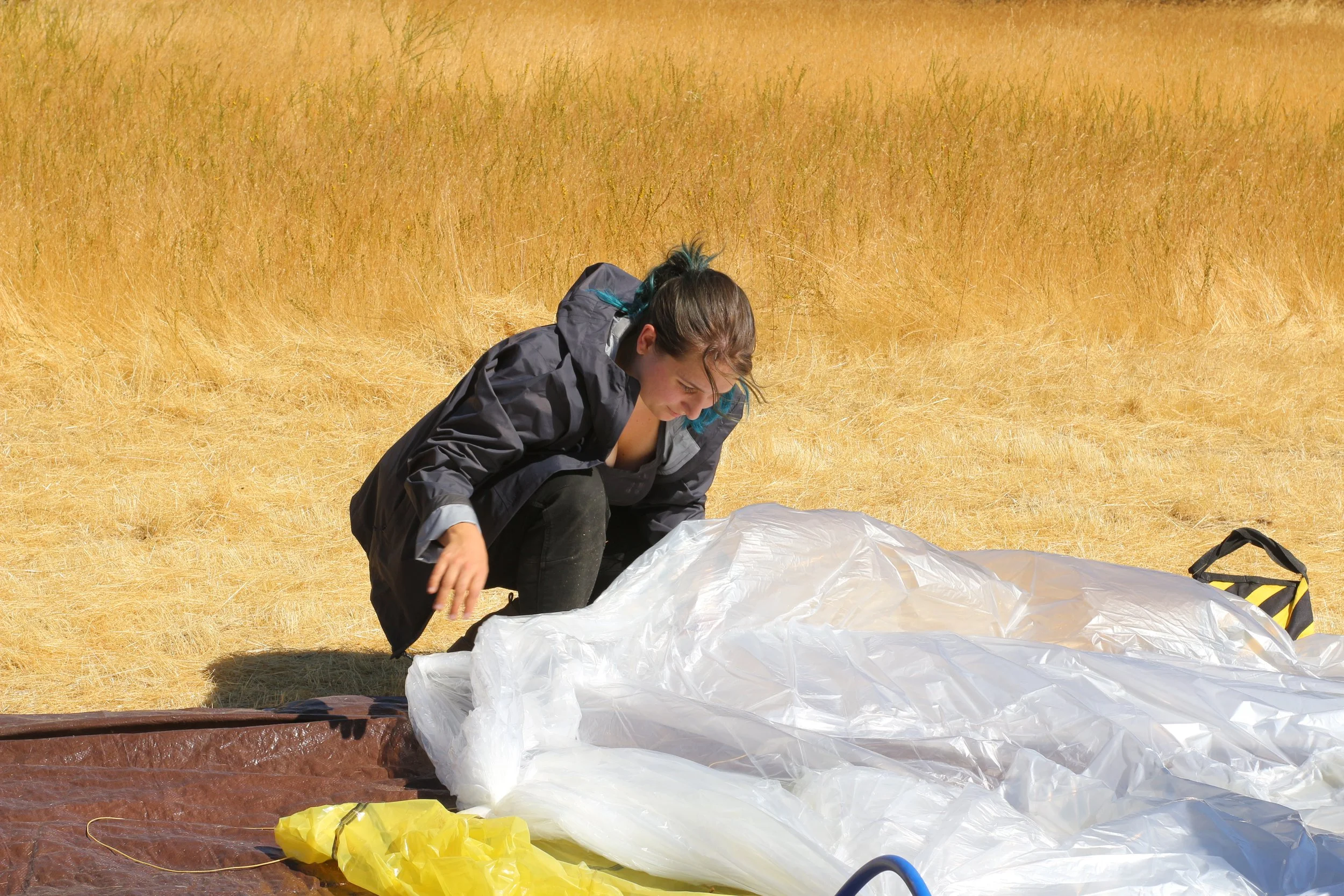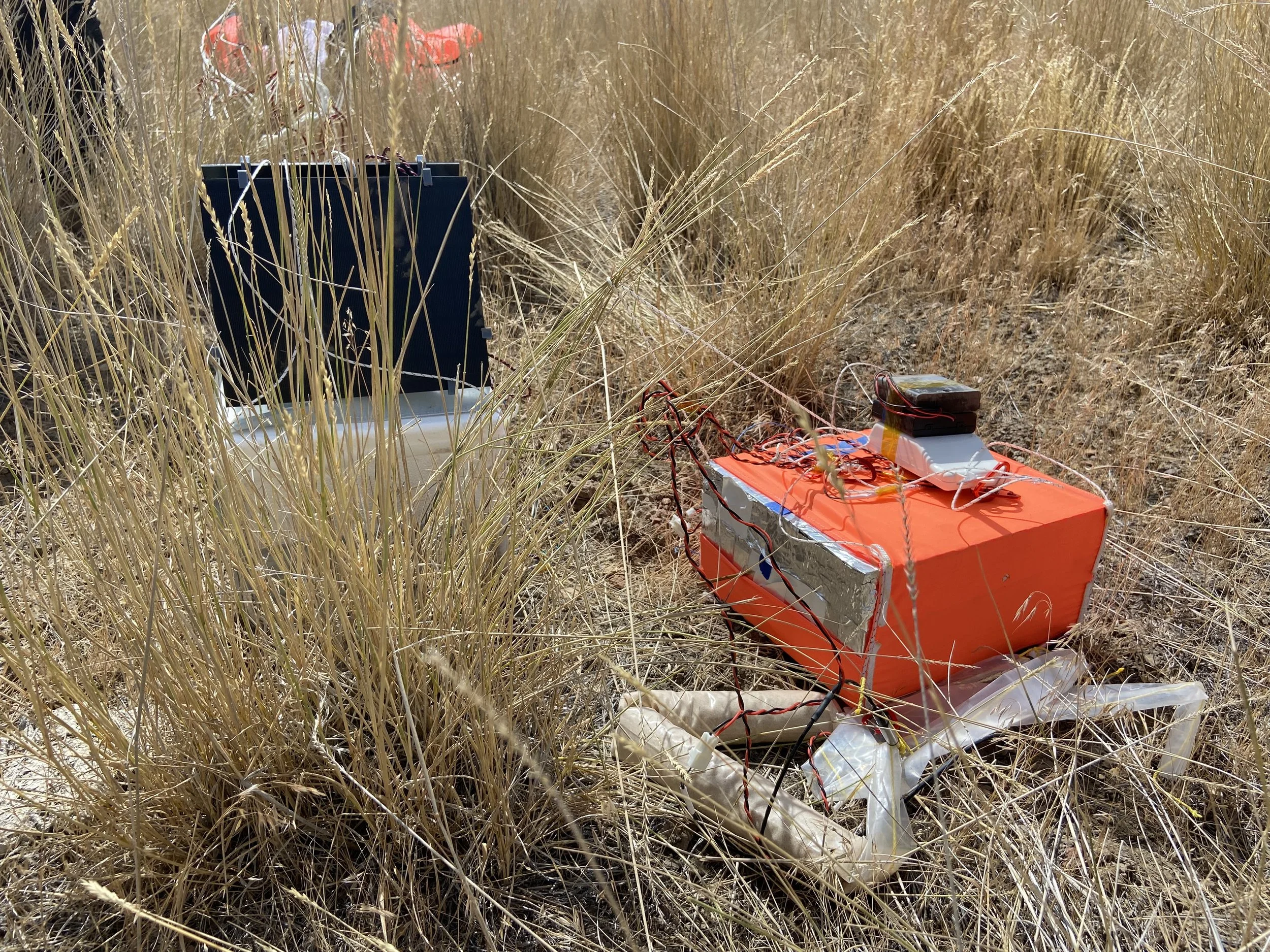
High Altitude Balloon Observations
The stratosphere plays a critical role in our Earth system, influencing the global atmosphere and the health of the world’s protective ozone layer. Observations of the stratosphere are essential for studying the impacts of increased aerosol pollution from sources such as wildfires and space traffic, of aerosols emitted by large volcanoes, and of gathering baseline information for studying the effects of dispersing aerosol particles to reflect sunlight from the stratosphere, or stratospheric aerosol injection (SAI).
Observing the Stratosphere
High-altitude Observing Platform Explorer (HOPE)
Balloons have long been valuable tools for studying the atmosphere. Every day, hundreds of standard latex balloons are launched worldwide carrying disposable sensors called radiosondes that measure temperature, pressure, and water vapor from ground-level to the stratosphere, where they burst and fall to the ground or sea. These “profiles” of basic atmospheric measurements are critical for weather forecasts, but are also important for calibrating and constraining more complex measurements taken by satellites and ground-based sensors. These balloons are simple, relatively cheap and easy to operate, but offer very short time-spans at stratospheric altitudes, limited ability to influence where the balloon goes or how long it stays there, and limit instruments to ‘disposable’ payloads that can be lost.
In contrast, advanced “super-pressure” balloons can carry heavier equipment for long periods at high altitudes, but their 6-figure cost limits their accessibility for research. This leaves a gap in affordable, capable balloon platforms for high-altitude observations, even as demand grows for research to understand changing influences on.
Observing the stratosphere is challenging. It is located at altitudes higher than those reached by standard airplanes, drones, or balloons. Conditions are harsh, including extremely low temperatures, very low pressure, and strong winds that make it challenging to control observational instruments and vehicles. Furthermore, the stratosphere's diffuse nature means that aerosol particles are present in very low concentrations. Detecting and measuring these particles requires highly sensitive and advanced instruments.
In an effort led by lighter-than-air platform specialists Sarah Schubert and Dan Bowen, SilverLining launched a navigable, high-altitude, long-duration balloon with instruments for stratospheric observations: the High-altitude Observing Platform Explorer (HOPE). It incorporates recent innovations in hardware, communications, and instrumentation, giving researchers greater flexibility in terms of location, duration, altitude, and control. Developed using standard materials, HOPE is also affordable. It is designed to help expand measurements of the stratosphere as well as the number and geographies of people who can make them.
Upgrading observational capabilities could expand and accelerate science globally
Sampling the upper-troposphere/lower stratosphere with CO2 and aerosol sensors: A longer-duration retrievable platform could support gathering data to contribute to NOAA’s sampling program in Boulder, Colorado, which has been instrumental in defining background conditions for tropospheric and stratospheric conditions.
Baseline measurements for projecting and detecting changes in stratospheric aerosols: Calibrated, standardized and coordinated with routine launches by NOAA in Boulder, HOPE could expand observations of the distribution of aerosols throughout the troposphere and stratosphere, building our understanding of the variability of aerosol conditions in various parts of the globe. Based on the extensive NOAA record, we can also use HOPE flights to identify if any measurements are outside the standard variability.
Capturing plumes from stratospheric penetrations of pyro-cumulus wildfires or volcanic eruptions: Based on the current smoke map, there is significant likelihood that the instrumented balloon will cross the path of forest fire smoke plume (see below). If it does encounter such a plume, the POPS instrumented balloon will be able to identify if the current fires have led to the presence of soot in the lower stratosphere, as was the case for the Australian fires of 2021.
High-altitude Observing Platform Explorer: HOPE
The first flight of the HOPE took place on August 19, 2024, carrying atmospheric instruments to collect baseline observations while testing both the balloon platform and instrument capabilities in stratospheric conditions.
HOPE uses a special type of balloon called a “zero-pressure balloon.” This balloon is made of plastic and open at the bottom, allowing it to rise without popping as it reaches its target altitude. By adjusting the amount of helium used and the weight of the equipment it carries, the balloon’s altitude and flight path can be controlled. Sophisticated software helps choose the best altitude and timing by analyzing hyper-local high-altitude conditions and wind patterns.
The balloon is equipped with two-way satellite communication and location tracking, allowing researchers to make minor adjustments as the balloon rises and as temperatures and winds change. If necessary, they can also end the flight at any time. For safety, the balloon is visible to aircraft through a radar reflector. The instruments attached to the balloon have a secure detachment system and parachute, ensuring they can be safely retrieved in accessible areas after the flight.
HOPE1 was a technical success, reaching 58 thousand feet and flying at altitude for 10 hours. It carried a particle measurement instrument that detected aerosols from wildfires in California along with weather instruments. Following this flight, the team is working with science agencies on instrument calibration so that future flights generate data that can be provided openly for research. Future flights will add more advanced instruments and, we hope, a next-generation instrument that can take readings over longer periods of time.










